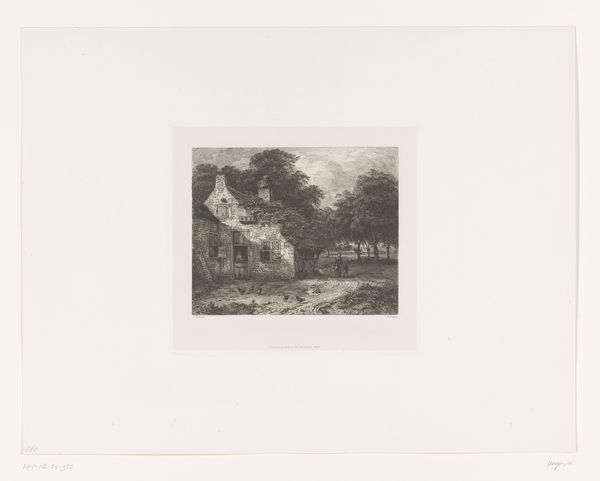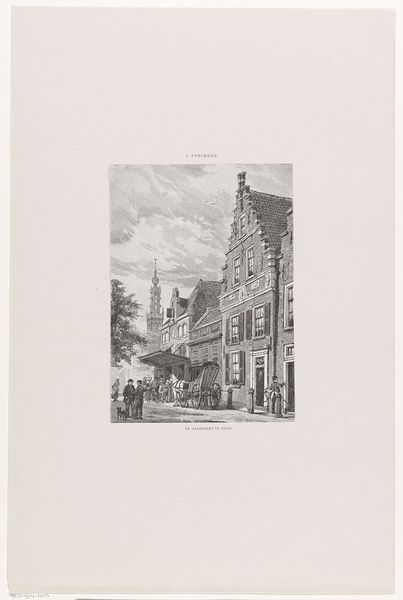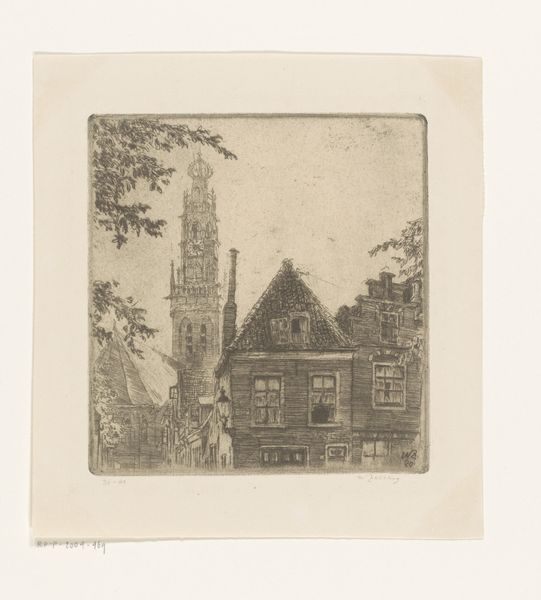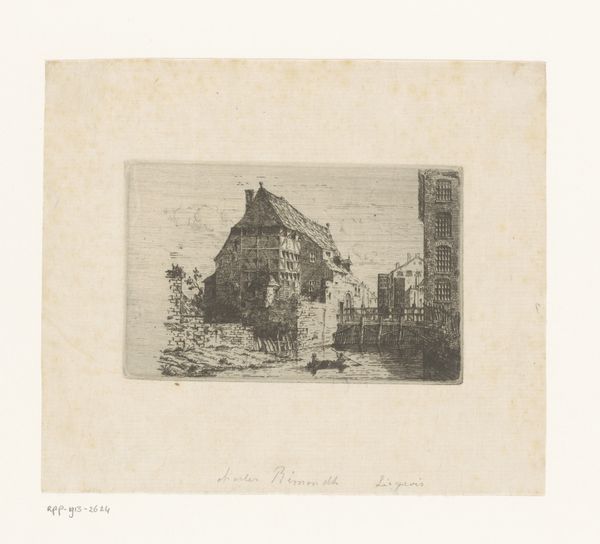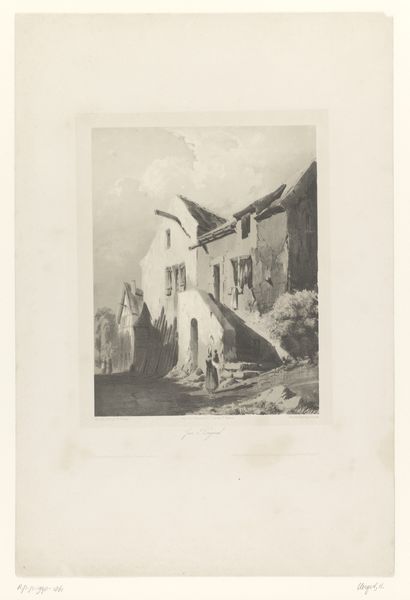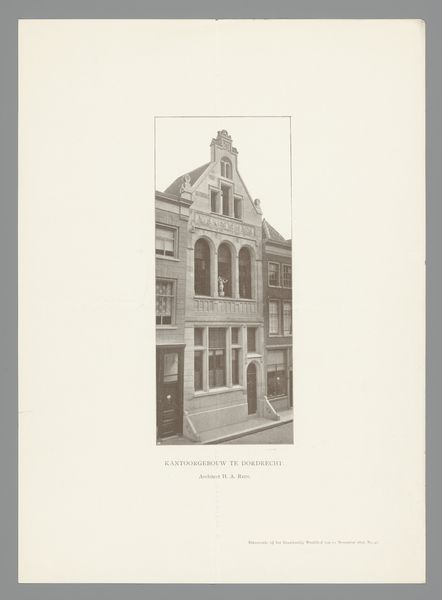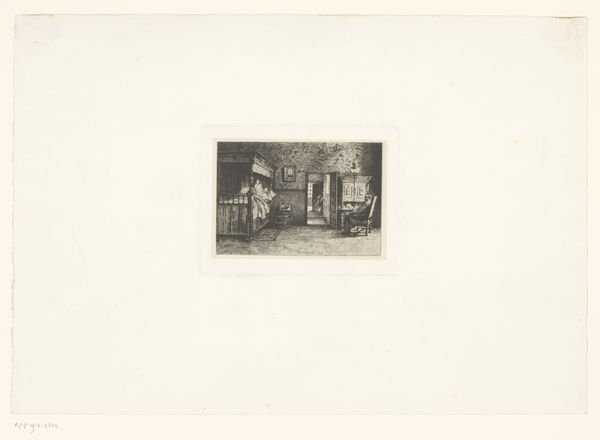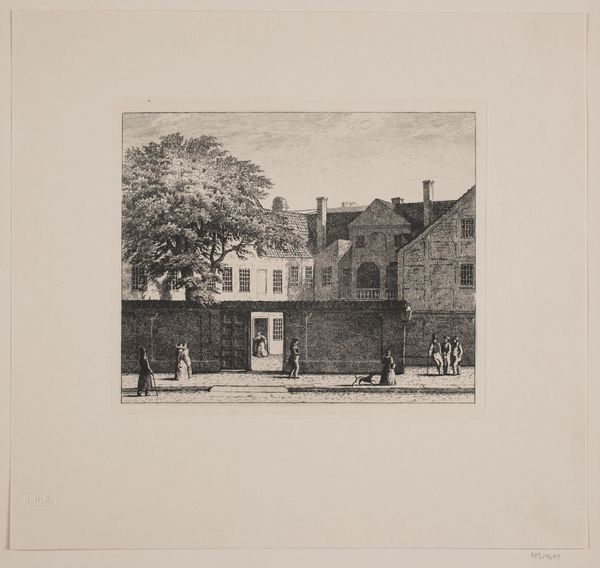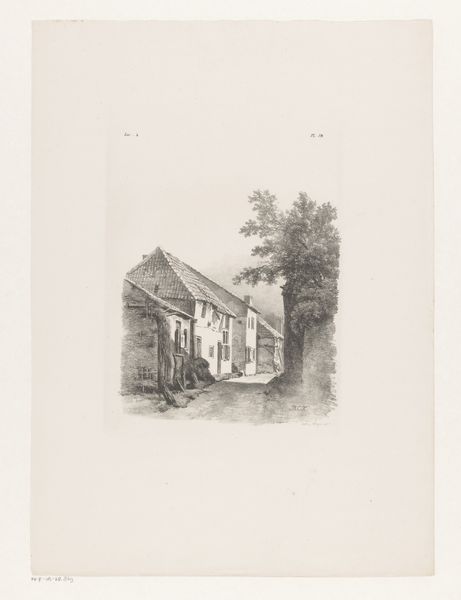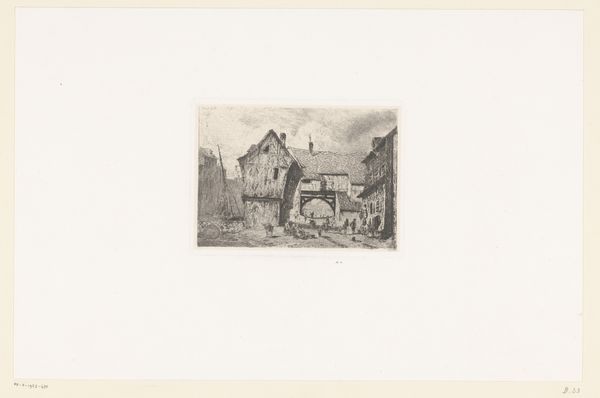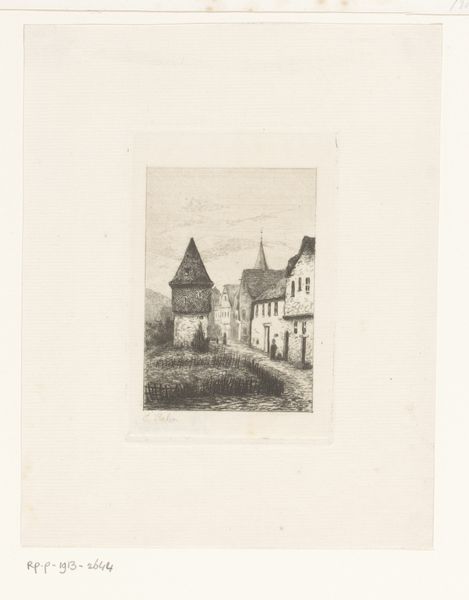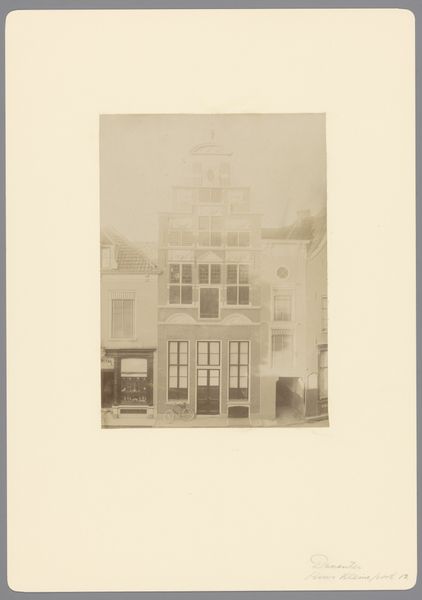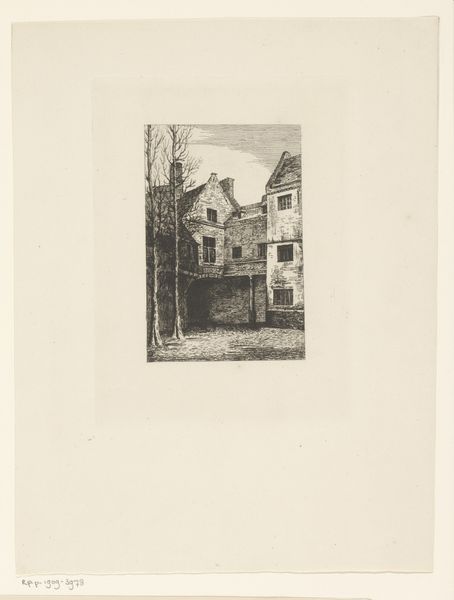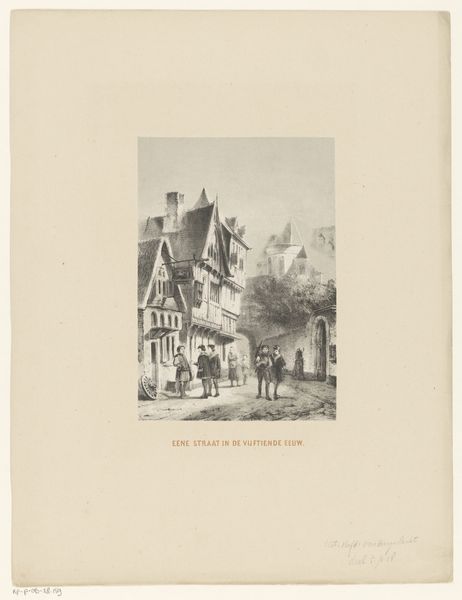
print, etching
#
print photography
#
dutch-golden-age
# print
#
etching
#
landscape
#
line
#
cityscape
#
street
#
realism
Dimensions: height 347 mm, width 253 mm
Copyright: Rijks Museum: Open Domain
Curator: This is Willem Steelink's "View of Houses in Delft, Known as 'The Little Street'," an etching from 1888 to 1891. Editor: There's an immediate sense of quietude about this piece; the fine lines and monochrome palette contribute to a subdued, almost melancholic atmosphere. Curator: Etchings like this one allowed for a wider distribution of imagery. Think about the popular market for these glimpses of Dutch life during the late 19th century—it fed into a broader sense of national identity. Editor: And within that national identity, the recurring motif of home is present. Note the figure standing in the doorway, framed as though emerging from a private interior into a public space. The artist emphasizes that transitional zone. Do you notice the second figure, and the animal, sleeping by the wall? This adds narrative to a domestic vision. Curator: You're right, and I think Steelink consciously taps into this sentimentality; his training in the Hague School placed emphasis on everyday life. This echoes a broader 19th-century desire for visual realism and historical accuracy—capturing places before urban modernization completely reshaped them. Editor: And yet, the choice of etching transforms a potentially realistic scene into something more evocative. The linear style renders the brick and stone not simply as building material, but as textures that imply years of accumulation. Curator: The composition draws the eye back into the perspective, emphasizing the houses receding into the distance. This echoes how, historically, wealth consolidated in cities, impacting how street scenes are composed. The city as social reality is captured by Steelink’s mastery of line. Editor: Absolutely. Looking closer, there’s something undeniably appealing in the visual simplicity of it all, yet those subtle details evoke layered narratives of the past—a tangible reminder of home, of routine, of generations. Curator: Ultimately, this work reveals much about the period's visual culture and growing interest in local realism amid broad social change. Editor: For me, it suggests a continuing connection to place, and perhaps even a quiet yearning for times gone by.
Comments
No comments
Be the first to comment and join the conversation on the ultimate creative platform.
